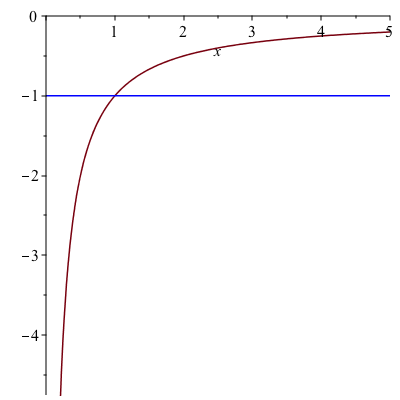Mathematics is full of weird stuff. One of them is the square root of an operator. So far, I have seen only two books that discuss the square root of an operator. They are listed in the references below.
Definition. An operator $R$ is called a square root of an operator $T$ is $R^2=T$.
Example. In quantum computing, $\sqrt{\mathrm{NOT}}$ gate is given by
$$\sqrt{\mathrm{NOT}}=\begin{bmatrix}
\frac{1+i}{2} & \frac{1-i}{2}\\
\frac{1-i}{2} & \frac{1+i}{2}
\end{bmatrix}$$
and
$$\sqrt{\mathrm{NOT}}\cdot\sqrt{\mathrm{NOT}}=\mathrm{NOT}=\begin{bmatrix}
0 & 1\\
1 & 0
\end{bmatrix}$$
As required by quantum mechanics, quantum gates are unitary matrices. There is no counterpart of $\sqrt{\mathrm{NOT}}$ gate in classical computing, so $\sqrt{\mathrm{NOT}}$ gate is a truly quantum gate. As far as I know, no one has come up with a physical implementation of $\sqrt{\mathrm{NOT}}$ gate yet.
Example. An operator does not necessarily have a square root. For example, define $T:\mathbb{C}^3\longrightarrow\mathbb{C}^3$ by
$$T(z_1,z_2,z_3)=(z_2,z_3,0)$$
Then one can easily show that $T$ is linear. Suppose that $T$ has a square root $R$. Let $\begin{bmatrix}
r & s & t\\
u & v & w\\
z & y & z
\end{bmatrix}$ be the matrix associated with $R$. Since the matrix associated with $T$ is $\begin{bmatrix}
0 & 1 & 0\\
0 & 0 & 1\\
0 & 0 & 0
\end{bmatrix}$, we have the equation
$$\begin{bmatrix}
r & s & t\\
u & v & w\\
z & y & z
\end{bmatrix}\cdot\begin{bmatrix}
r & s & t\\
u & v & w\\
z & y & z
\end{bmatrix}=\begin{bmatrix}
0 & 1 & 0\\
0 & 0 & 1\\
0 & 0 & 0
\end{bmatrix}$$
This is a system of 9 scalar equations. One can attempt to solve this equation using a CAS (Computer Algebra System), for example, Maple and see that the system does not have a solution, i.e. $R$ does not exist.
So, what kind of operators have square roots?
Theorem. Identity + Nilpotent has a square root.
Proof. Let $N$ be nilpotent. Then $N^m=0$ for some positive integer $m$. Consider the Taylor series for $\sqrt{1+x}$:
$$\sqrt{1+x}=1+a_1x+a_2x^2+a_3x^3+\cdots$$
Using the nilpotency of $N$, we may guess that $\sqrt{I+N}$ takes the form
$$I+a_1N+a_2N^2+\cdots+a_{m-1}N^{m-1}$$
Now,
\begin{align*} (I+a_1N+a_2N^2+\cdots+a_{m-1}N^{m-1})^2=I&+2a_1N+(2a_2+a_1^2)N^2\\&+(2a_3+2a_1a_2)N^3+\cdots\\ &+(2a_{m-1}+\cdots)N^{m-1}=I+N \end{align*}
and by comparing the coefficients
$a_1=\frac{1}{2}$, $2a_2+a_1^2=0$, so $a_2=-\frac{1}{8}$, $2a_3+2a_1a_2=0$, so $a_3=\frac{1}{16}$, and so and forth.
Theorem. Suppose that $T: V\longrightarrow V$ is invertible. Then $T$ has a square root.
Proof. Let $\lambda_1,\lambda_2,\cdots,\lambda_m$ be the distinct eigenvalues of $T$. Then for each $j$, there exists a nilpotent operator $N_j: G(\lambda_j,T)\longrightarrow G(\lambda_j,T)$ such that $T|{G(\lambda_j,T)}=\lambda_jI+N_j$. (See [1] , p 252, Theorem 8.21 for a proof.) Here, $G(\lambda_j,T)$ is the eigenspace of $T$ corresponding to the eigenvalue $\lambda_j$. Since $T$ is invertible, no $\lambda_j$ is equal to 0, so we can write $$T|{G(\lambda_j,T)}=\lambda_j\left(I+\frac{N}{\lambda_j}\right)$$
Since $\frac{N}{\lambda_j}$ is nipotent, $I+\frac{N}{\lambda_j}$ has a square root. Let $R_j$ be $\sqrt{\lambda_j}$ times the square root of $I+\frac{N}{\lambda_j}$. Any vector $v\in V$ can be written uniquely in the form
$$v=u_1+u_2+\cdots+u_m,$$
where each $u_j$ is in $G(\lambda_j,T)$. Using this decomposition, define an operator $R:V\longrightarrow V$ by
$$Rv=R_1u_1+R_2 u_2+\cdots+R_m u_m$$
Then $R^2u_j=R_j^2 u_j=T|{G(\lambda_j,T)}u_j=\lambda_ju_j$ and so \begin{align*} R^2v&=R_1^2u_1+R_2^2u_2+\cdots+R_m^2u_m\\ &= T|{G(\lambda_1,T)}u_1+T|{G(\lambda_2,T)}u_2+\cdots+T|{G(\lambda_m,T)}u_m=Tv
\end{align*}
Therefore, $R$ is a square root of $T$.
Example. The $\mathrm{NOT}$ gate is invertible. It is an inverse of itself.
The proof of the above theorem suggests that an operator $T$ has a square root if there is a spectral decomposition of $T$ with respect to the standard inner product of $\mathbb{C}^n$. A normal operator is such an operator. Recall that an operator $T: V\longrightarrow V$ is normal if $T^\ast T=TT^\ast$. The following theorem guarantees the existence of such a spectral decomposition of a normal operator.
Theorem. A matrix $T$ is normal if and only if there exists a diagonal matrix $\Lambda$ and an unitary matrix $U$ such that $T=U\Lambda U^\ast$.
Here, the diagonal entries of $\Lambda$ are the eigenvalues of $T$ and the columns of $U$ are the eigenvectors of $T$. The matching eigenvalues in $\Lambda$ come in the same order as the eigenvectors are ordered as columns of $U$.
Let $T: V\longrightarrow V$ be a normal operator and write it as its spectral decomposition, using Dirac’s braket notation,
$$T=\sum_j\lambda_j|v_j\rangle\langle v_j|$$
Define
$$f(T)=\sum_j f(\lambda_j)|v_j\rangle\langle v_j|$$
Using this definition, one can define, for example, the exponential, square root, and logarithmic operator of $T$.
Example. Let $T=\begin{bmatrix}
0 & 1\\
1 & 0
\end{bmatrix}$. Find the square root of $T$.
Solution. $T$ is hermitian (symmetric), so it is normal. The spectral decomposition of $T$ is given by
$$T=|v_1\rangle\langle v_1|-|v_2\rangle\langle v_2|,$$
where
$$|v_1\rangle=\frac{1}{\sqrt{2}}\begin{bmatrix}
1\\
1
\end{bmatrix}\ \mathrm{and}\ |v_2\rangle=\frac{1}{\sqrt{2}}\begin{bmatrix}
1\\
-1
\end{bmatrix}$$
Now,
\begin{align*} \sqrt{T}&=|v_1\rangle\langle v_1|+i|v_2\rangle\langle v_2|\\ &=\frac{1}{2}\begin{bmatrix} 1 & 1\\ 1 & 1 \end{bmatrix}+\frac{i}{2}\begin{bmatrix} 1 & -1\\ -1 & 1 \end{bmatrix}\\ &=\begin{bmatrix} \frac{1+i}{2} & \frac{1-i}{2}\\ \frac{1-i}{2} & \frac{1+i}{2} \end{bmatrix} \end{align*}
References:
- Sheldon Axler, Linear Algebra Done Right, Third Edition, Springer, 2015
- Michael A. Nielsen and Isaac L. Chuang, Quantum Computation and Quantum Information, Cambridge University Press, 2000

